About the Western Ecology Division (WED) of EPA's National Health and Environmental Effects Research Laboratory
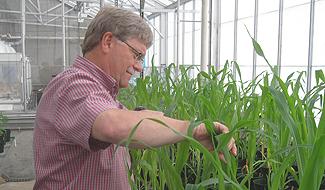 Greenhouse laboratory studies
Greenhouse laboratory studies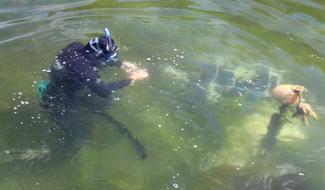 Diver taking samples for ocean acidification research
Diver taking samples for ocean acidification research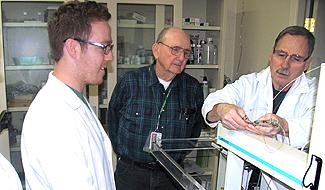 Isotope lab
Isotope lab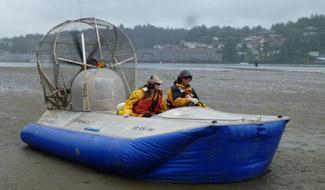 Specially designed "hovercraft" for shoreline research
Specially designed "hovercraft" for shoreline research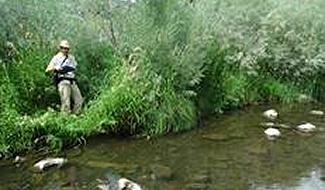 Collecting stream temperature data
Collecting stream temperature dataWhat We Do
The Western Ecology Division (WED) conducts innovative research on watershed ecological epidemiology and develops tools to assist stakeholders achieve sustainable and resilient watersheds. Research focuses on terrestrial, freshwater and coastal systems and how they are connected. Scientists develop tools to monitor and predict the condition of these systems and their contributions to human well-being nationwide, with a special focus on the Pacific Northwest and adaptation to climate change.
WED leads innovative research and predictive modeling efforts that link environmental condition to the health and well-being of people and society. WED advances research and tools for achieving sustainable and resilient watershed and water resources. WED advances systems-based research to predict the adverse effects of chemicals and other stressors across species and biological levels of organization through the development and quantification of adverse outcomes pathways across multiple scales.
Programs and Projects Managed by the Western Ecology Division:
- WED conducts research on the identification, quantification and valuation of final ecosystem goods and services (FEGS) available in the nation, regions, and communities. A classification system, the FEGS-CS guides the development of this information and houses the information.
- Scientists developed a framework to economically account for the benefits provided by ecosystems. This framework, called the National Ecosystem Services Classification System, analyzes the human welfare impacts of policy-induced changes to ecosystems. It classifies the flows of the ecosystem supply and demand.
- WED leads research and technical support for the Office of Water’s National Aquatic Resource Surveys (NARS). The surveys and assessments provide answers to common questions of the public and Congress such as: Is there a problem in our Nation’s waters? How big is the problem? Is it widespread or localized? What are the biggest causes of problems? WED provides survey design and data analyses for the indicators used in the surveys. In turn, the data resulting from the surveys are used in national assessments and used as a core portion of the information available to drive WEDs research on watershed epidemiology.
- WED scientists have developed the Stream-Catchment (StreamCat) dataset, an extensive collection of landscape metrics for 2.6 million streams and associated catchments within the conterminous U.S. StreamCat that includes both natural and human-related landscape features. They have used StreamCat data to develop national maps of aquatic condition and watershed integrity.
- Ecoregions, developed by WED scientists, are a spatial framework used for watershed ecological epidemiological research, assessment, management, and monitoring of ecosystems and their components
- Scientists created models, like VELMA, to help planners and communities assess green infrastructure to control loadings from non-point sources of pollution.
- Scientists identify exposure behaviors of engineered nanomaterials in terrestrial systems and the potential for these materials into the human food chain.
- Scientists conduct analyses to identify molecular initiating events (key events directly perturbed by interaction with a chemical) across species. Using these events, they are able to develop Adverse Outcome Pathway (AOP) models to determine common events triggered by engineered nanomaterials.
- Scientists developed Stable Isotope Mixing models to trace chemical movement through the environment.
Organization
Alan Thornhill, Director
